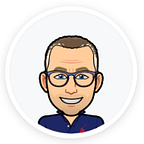#EdTech products can potentially be used by a wide and varied group of user personas. As a result, it is critical to collect information to understand how and who uses your product. One way is to instrument your product for Product-led Growth (PLG) to gain individual user insights for marketing and product development (see Figure 1 below). The other way is to organize your Customer Success resources to work in conjunction with PLG.
Customer Success (CS) organizations can be designed with a range of strategic objectives (see Figure 2 Strategic levels of Customer Success). CS resources are organized in conjunction with PLG-instrumented products can be a powerful combination. PLG-instrumented products can facilitate more automated Customer Success interactions without diminishing user experiences. This means that a pool of CS resources can potentially manage a higher number of customers and free them for more proactive customer interactions. Examples of proactive CS activities include user research, new feature feedback, and addressing common support issues.
No matter how the CS organization is organized, the key is to collect user information to find insights about user journeys to facilitate more efficient product development and more targeted marketing. Product development is not just about adding more and more features over time. In the #EdTech market, more features often make the product harder to sell to various personas. A PLG-friendly CS organization will help identify the key features of user segments and identify opportunities to reduce friction (e.g., onboarding flows, etc.). It could also help design A/B testing of new features and user interface/experiences.
